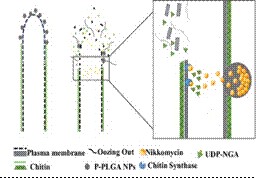
Pune: Highly porous Xerogel dressing can save lives by clotting blood faster and halting haemorrhage. Developed by Agharkar Research Institute (ARI) Pune, the highly porous spongy xerogel hemostatic dressing is supplemented with substances that bind to a receptor inside a cell (agonists) like silica nanoparticles (SiNPs) and calcium.
The porous composite xerogel dressing incorporates Silica Nanoparticles and calcium that can help blood clot rapidly and provide relief for uncontrolled haemorrhage. The composite showed significant improvement in the rate of blood clotting in comparison to commercial dressing.
It may be mentioned that uncontrolled haemorrhage is one of the leading causes of traumatic death resulting from accidents or injuries and during military or surgical operations. More than 40 % of trauma deaths are due to severe loss of blood. Gauze, a commonly used first aid material or the natural defence of the human body operating through a reduction in blood flow to the injury site, platelet plug formation by fibrin activation and activation of blood clotting pathways are inadequate to halt severe haemorrhage. Therefore, improved hemostatic materials are urgently required to reduce blood losses.

Scientists from ARI studied composite material and found that it increased the blood clotting index by 13-fold in comparison to commercial dressing clotting capacity. The well-characterized xerogel showed the presence of multiple pores of around 30 µm size that contributed to the high absorbance capacity of the dressing. The supplements improved the clotting capacity and resulted in quick absorbance of blood.
Platelets are an important component of blood and contribute to the blood clotting process. Several factors like change in platelet shape, secretion of calcium, and activation of receptors on platelet surface play a role in the intricate pathway of blood clotting. The xerogel hemostatic dressing showed enhanced platelet aggregation due to the development of well-formed pseudopodia in the activated platelets resulting in agglutination which plays a major role in the clotting process.
In addition, the composite enhanced calcium release, and its extrusion. Furthermore, a significant increase in the active form of the protease-activated receptor gene (PAR1 gene– present in the platelet membranes facilitates thrombin signalling) was noted in human platelets.
Platelet calcium release and upregulation of PAR1 on the platelet surface are critical for platelet shape change and aggregation. The study published in the Journal of Applied Polymer Science indicates that intracellular molecular mechanisms of platelet activation through PAR1 gene activation and calcium store release– a significant event in the activation of platelets are responsible for the hemostatic efficiency of xerogel composite. Such dressings can provide a potential hemostatic solution to reduce blood loss, disability, and mortality during surgery and trauma care.
– global bihari bureau





